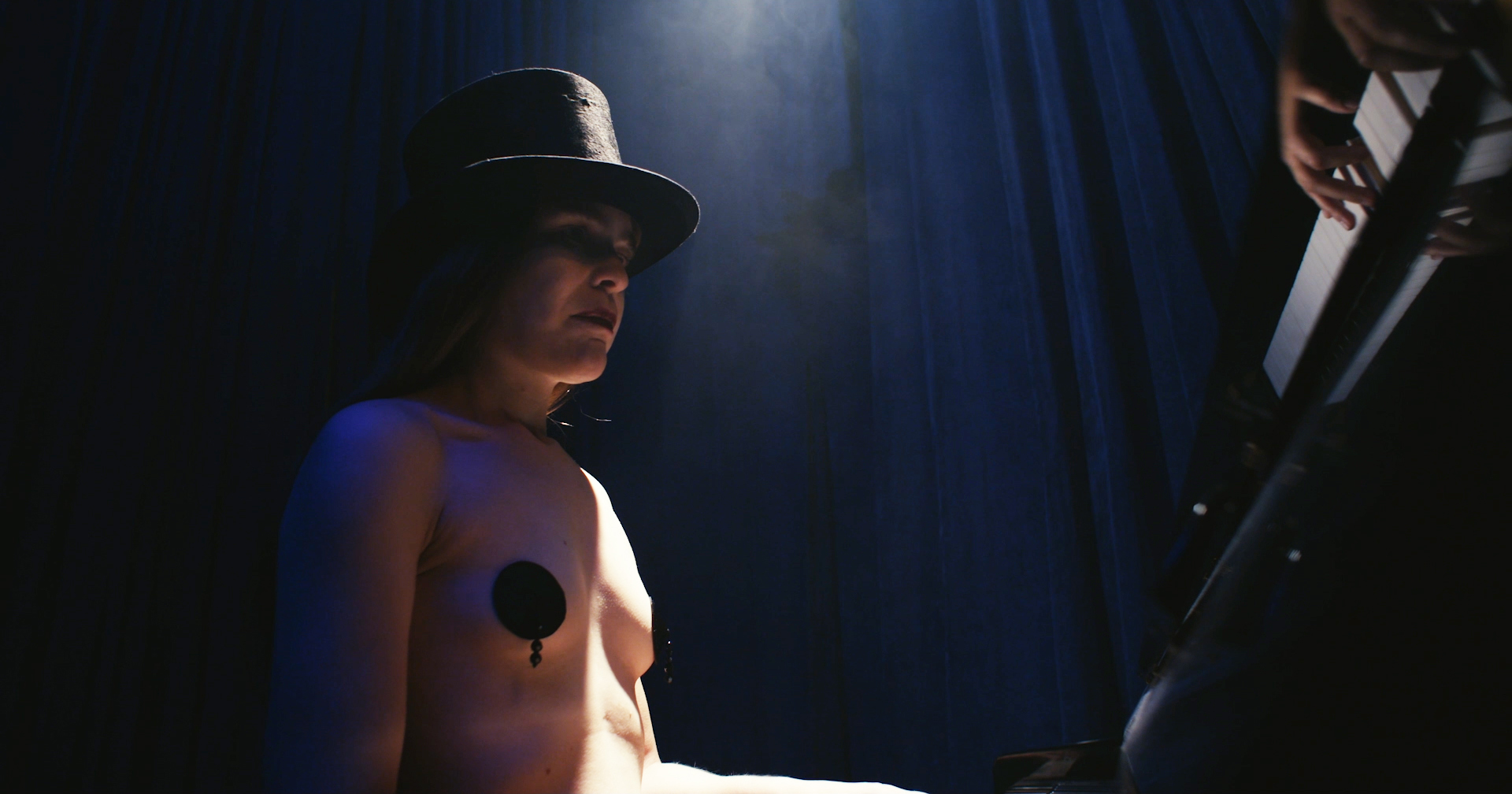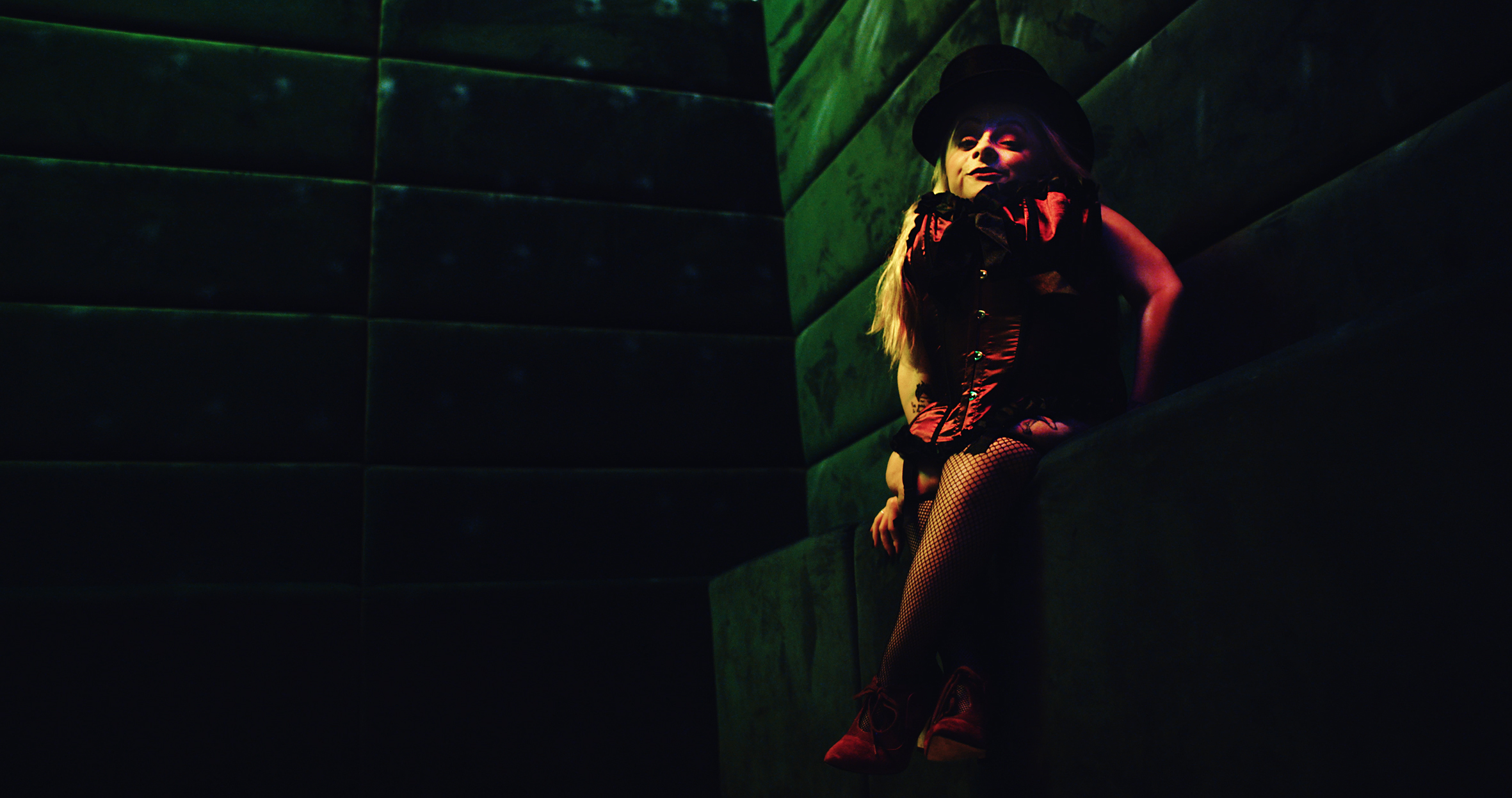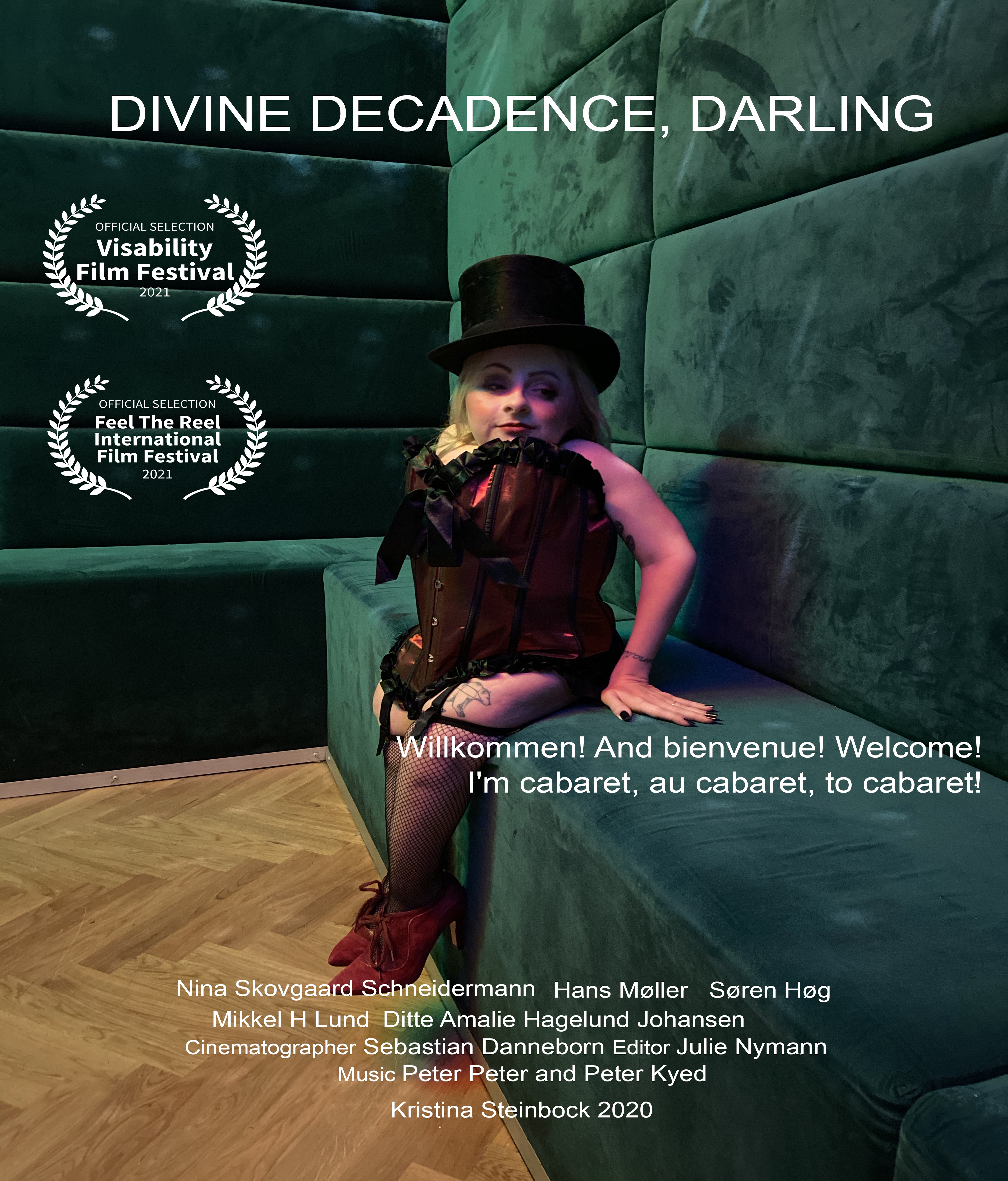![]()
Divine decadence, darling 2020
Dur 14.00 min, 4K video
Director Kristina Steinbock
Cinematographer Sebastian Danneborn
Editor Julie Nymann
Music Peter Peter and Petyer Kyed
Cast
Hans Møller, Søren Høg,
Ditte Amalie Hagelund Johansen, Nina Skovgaard Schneidermann og Mikkel H Lund.
The video
work is inspired by early 20th century cabaret scenes, in an era when stage
performances hinted a critical, political agenda and pushed for sexual
liberation through satire, poetry, music performance and songs. Divine
decadence, darling invites the audience through surreal, staged scenarios in an
empty nightclub where the audience are introduced to five performers living
with disabilities. They perform authentic and political testimonies, questioning
self-ownership, bodily integrity
control of one's own body and sexuality, while simultaneously celebrating
the amorous and decadent cabaret universe. The intimacy and sensuality that
people with disability embody, is seldom spoken of in society. Using cabaret
references against the history of freakshow and todays idea of the ‘perfect body’ the work tends to deconstruct the representations of
disability and breaking long-lasting taboos.
![]()
![]()
![]()
![]()
Do look now! –
performing erotic other-bodiedness in Kristina Steinbock’s film cabaret
By Svala
Vagnsdatter Andersen, PhD
In Divine Decadence, Darlingwe are invited into a velvet cabaret space. The music allures us from a distant
piano as we linger in a soft corridor waiting to be let inside. A master of
ceremonies appears to greet us singing the signature ‘Willkommen, Bienvenue, Welcome!’
from the musical Cabaret, and we are
cast as audiences when he says, ‘Look closely at our bodies – our beautiful
bodies’. In a wheelchair with full exaggerated makeup on and doubled in a
mirror, he is a rare sight. And when he introduces the rest of the cabaret
performers as erotic, sinful, and disabled, we know that we are in for an
alternative version of the traditional cabaret’s staging of politically edgy
and playfully erotic entertainment.
The body political issues are here presented loud and clear – ‘shamelessly’
as one of the performers states. The five actors are all beautifully dressed up
or stripped down with teasing lingerie adorning their othered bodies thus
expressing desire and sexuality in ways not often experienced outside of the
performance space. The obscenity of
the erotic disabled body makes it culturally invisible, but here we are urged
to witness it. Simultaneously, what becomes obvious is a mainstream refusion to
even acknowledge disability and sexuality in the same picture, because sex in
our cultural sphere is so closely connected with potency, agency, and the
performance of able-bodiedness. In this film, on the other hand, five
not-so-able-bodies are performing sexuality – they talk about it, they wear it
through clothes and makeup, they sing it, dance it, question it, live to show
and tell it.
In fact, the film balances on the ambivalence of our unability to picture the
disabled body as sexual while not wanting to let go of the thought: how do they
do it? Traditional 19. century freak shows increased the audiences’ curiosity
by not showing, but clearly hinting at the freaks’ sexuality, by presenting odd
couples like the giant and the dwarf, the Siamese twins and their spouses, or
by showing a line of children alongside a freakish mother. Very often, the
blurred status of gender or sexuality constituted the freaked element as in the
bearded woman or the hermaphrodite (now known as intersex). Thus, suggested
sexuality and reproduction were always features which added monstrosity to the exhibited freak bodies.
In Divine Decadence, Darling the
freak scenario turns towards the spectator and asks that we look and listen
without prejudice. Here is the man with cerebral palsy who tells about his
troubles with orgasms as his body cannot endure spasms; the man who tells the
frustrating story of Snow White and the seven horny dwarfs who are eventually
left in favour of the prince; the blind girl who sings her heart out about
abusing men for kinky sex; the tiny woman in an oversized corset who lets us in
on her desire to be explored. She calls her body ‘the hidden land’. The
question remains, what gaze is available to us if we are to discover othered
bodies’ sexuality – the polarity of the clinical gaze and the freak show gaze
certainly do not capture the experiences touched upon in this film cabaret.
The singing girl is blind. It is definitely impressing to watch her play
the piano, but when she goes on stage as an exotic dancer the subversive
aspects of her performance become obvious. As she sings by the piano: ‘I only
have two more holes where my eyes should be, so you don’t have any power over
me’. When she then wriggles into the spotlight in her thigh-highs and
bodystocking the spectator is somewhat bewildered. It turns out that a strong
component of striptease is visual contact with the dancer and the watched
object accepting and performing its objectification. The blind girl is certainly
performing her sexuality, but the big smile on her face may not be for our
gratification. Instead of her mirroring the spectators’ desires we get a slight
peek at the girl’s experience of herself as a sexual and sexually desirable
being. The same applies to the little man with the top hat who flirts
explicitly with a mirror on a selfie stick as he laughs and says: ‘Am I not
desirable?’. There seems to be no need for an answer to that question as long
as he is making eyes at himself.
The reclaiming of one’s own sexuality is a fairly political move for a
group of people who are usually twice freakedthrough their disability and sexuality. By choosing the cabaret as a setting,
the film furthermore points at the performativity that underlies the spectacles
we are witnessing. Every identity is performatively installed in us in
accordance with cultural models and expectations which are more or less
possible to meet. We never perform our identities to perfection, but we can aim
to come close. Even the identity as disabled is performative and to some degree
socially constructed – which bodies are able to function inside the norm
depends on how we administer and arrange our material culture. The bodies we
meet in the film are all in some way physically impaired. But as the master of
ceremony says, they are all shamelessly erotic. As such, they are performing disability quite imperfectly.
They refuse to fit into the paradigm of the disabled person as one to be pitied
and at best fixed. Because they wear their sexuality proudly on their sleeve
and are performing their erotic identities demonstratively, they must fail at
meeting society’s expectations to the well-disciplined disabled body. Somehow,
you cannot do both simultaneously.
Thus, when the man in the golden braces exclaims ‘Let’s celebrate
imperfection!’ he may not just be pointing at the bodies in wheelchairs or those
with sight impairment, but also at their imperfect doing disability, doing sexuality, and doing cabaret at the same
time. The cabaret film in itself is a strange combination of entertainment,
body political statements, and sexual confessions. It succeeds exactly by
desiring in abundance and performing to excess.
We, the spectators, also play a vital part in the scenery. Without our
peeking in from the outside, freaks would never have been freaks, and without
an audience this cabaret would just be masturbatory provocations. We are
included in the spectacle as authorization, because without us the show
wouldn’t go on. Our freakish gaze, which turns other bodies into othered bodies, is explicitly called
upon in the start when the master of ceremony welcomes us with his ‘Stare if
you like, but don’t judge’ – a challenge he turns and answers in the end: ‘Did
you stare? Did you judge? I bet you did!’. His presumption interpellates the viewer’s normative,
freak-invocative presence-as-gaze. We did this. The spectacle is down to our
internalized cultural body-sexual constraints.
The show does go on. It dares you to look away. I bet you can’t.
![]()





